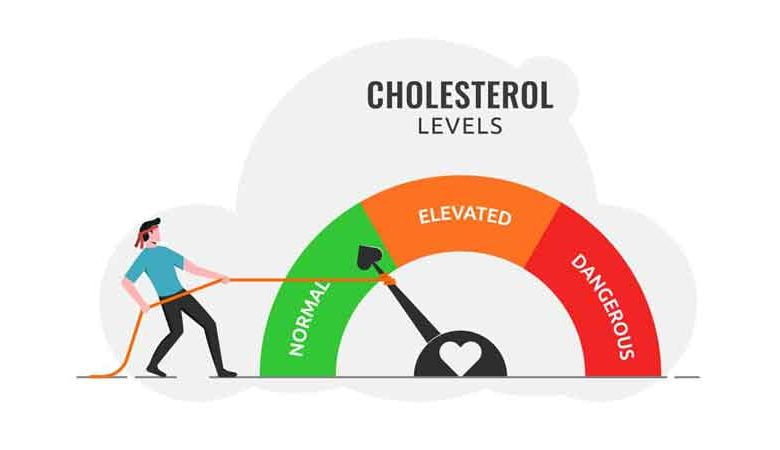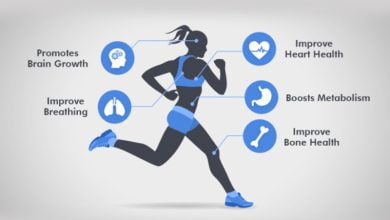Cholesterol Levels: Understanding the Complexities of Cardiovascular Health

Introduction:
Cholesterol, often regarded as a double-edged sword in the realm of health, plays a vital role in various physiological processes while also posing significant risks when present in excess. Understanding cholesterol levels and their implications for cardiovascular health is essential for mitigating the risk of heart disease, stroke, and other related conditions. In this comprehensive discussion, we will explore the intricacies of cholesterol, its sources, types, functions, factors influencing levels, health implications, and strategies for maintaining optimal cholesterol levels.
Understanding Cholesterol:
Cholesterol is a waxy, fat-like substance that is essential for the body’s normal function. It is produced primarily by the liver but can also be obtained from dietary sources. Cholesterol plays a crucial role in cell membrane structure, hormone synthesis, vitamin D production, and bile acid formation, among other functions. However, excessive levels of cholesterol in the bloodstream can lead to the buildup of plaque in the arteries, increasing the risk of atherosclerosis, heart attack, and stroke.
Types of Cholesterol:
Cholesterol is transported in the bloodstream by lipoproteins, which are particles composed of cholesterol, proteins, and triglycerides. The two primary types of cholesterol-containing lipoproteins are:
Low-Density Lipoprotein (LDL) Cholesterol:
LDL cholesterol, often referred to as “bad” cholesterol, carries cholesterol from the liver to the cells throughout the body. Elevated levels of LDL cholesterol are associated with an increased risk of atherosclerosis and cardiovascular disease.
Low-Density Lipoprotein (LDL) Cholesterol: Understanding the Role in Cardiovascular Health
Low-Density Lipoprotein (LDL) cholesterol, often referred to as “bad” cholesterol, is a critical component of the lipid profile and plays a significant role in the development of cardiovascular disease. Understanding LDL cholesterol, its functions, sources, health implications, and strategies for managing levels is essential for maintaining optimal cardiovascular health. In this comprehensive discussion, we will delve into the complexities of LDL cholesterol, its impact on health, and approaches for maintaining healthy levels.
Understanding LDL Cholesterol:
LDL cholesterol is a type of lipoprotein that transports cholesterol from the liver to cells throughout the body, where it is utilized for various physiological processes. LDL particles are composed of cholesterol, proteins, and triglycerides, and they play a crucial role in providing cells with the cholesterol they need for membrane structure, hormone synthesis, and other essential functions. However, excessive levels of LDL cholesterol can lead to the accumulation of cholesterol in the walls of arteries, contributing to the development of atherosclerosis, or the buildup of plaque.
Sources of LDL Cholesterol:
The liver is the primary source of LDL cholesterol production, synthesizing cholesterol and packaging it into LDL particles for distribution throughout the body. In addition to endogenous production, dietary intake also contributes to LDL cholesterol levels. Foods high in saturated fats, trans fats, and dietary cholesterol, such as red meat, full-fat dairy products, fried foods, and processed foods, can increase LDL cholesterol levels.
Health Implications of Elevated LDL Cholesterol:**
Elevated LDL cholesterol levels are a major risk factor for the development of cardiovascular disease, including coronary artery disease, heart attack, and stroke. When LDL cholesterol levels are too high, excess cholesterol can accumulate in the walls of arteries, forming plaque. Over time, this plaque can narrow and harden the arteries, restricting blood flow to vital organs such as the heart and brain. If a plaque ruptures, it can trigger the formation of blood clots, leading to a heart attack or stroke.
Managing LDL Cholesterol Levels:
Maintaining optimal LDL cholesterol levels is crucial for reducing the risk of cardiovascular disease and promoting overall health. Strategies for managing LDL cholesterol levels include:
Healthy Diet:
Adopting a heart-healthy diet rich in fruits, vegetables, whole grains, lean proteins, and healthy fats can help lower LDL cholesterol levels. Limiting saturated fats, trans fats, and dietary cholesterol is essential for reducing LDL cholesterol levels.
Regular Exercise:
Engaging in regular physical activity, including aerobic exercise and strength training, can help raise HDL cholesterol levels and lower LDL cholesterol levels. Exercise also promotes weight loss and improves overall cardiovascular health.
Weight Management:
Maintaining a healthy body weight through a combination of balanced nutrition and regular exercise is essential for managing LDL cholesterol levels. Losing excess weight can help lower LDL cholesterol levels and reduce the risk of cardiovascular disease.
Smoking Cessation:
Quitting smoking is one of the most important steps individuals can take to improve LDL cholesterol levels and reduce the risk of cardiovascular disease. Smoking damages blood vessels and accelerates the progression of atherosclerosis.
Medication:
In some cases, medication may be prescribed to help lower LDL cholesterol levels, particularly for individuals with a high risk of cardiovascular disease or those who have not achieved optimal cholesterol levels through lifestyle modifications alone. Statins, bile acid sequestrants, PCSK9 inhibitors, and other medications are commonly used to lower LDL cholesterol levels and reduce the risk of cardiovascular events.
Conclusion:
Low-Density Lipoprotein (LDL) cholesterol plays a significant role in cardiovascular health, with elevated levels contributing to the development of atherosclerosis and increasing the risk of heart disease, heart attack, and stroke. Understanding the sources, functions, and health implications of LDL cholesterol is essential for managing cholesterol levels and reducing the risk of cardiovascular disease. By adopting a heart-healthy lifestyle that includes a balanced diet, regular exercise, weight management, smoking cessation, and, when necessary, medication, individuals can promote optimal LDL cholesterol levels and support overall cardiovascular health for a vibrant and fulfilling life.
High-Density Lipoprotein (HDL) Cholesterol:
HDL cholesterol, commonly known as “good” cholesterol, transports cholesterol from the bloodstream to the liver for removal from the body. Higher levels of HDL cholesterol are associated with a reduced risk of heart disease.
High-Density Lipoprotein (HDL) Cholesterol: The Guardian of Cardiovascular Health
High-Density Lipoprotein (HDL) cholesterol, often referred to as “good” cholesterol, is a crucial component of the lipid profile and plays a significant role in protecting against cardiovascular disease. Understanding HDL cholesterol, its functions, sources, health implications, and strategies for optimizing levels is essential for maintaining optimal cardiovascular health. In this comprehensive exploration, we will delve into the intricacies of HDL cholesterol, its importance in health, and approaches for enhancing its protective effects.
Understanding HDL Cholesterol:
High-Density Lipoprotein (HDL) cholesterol is a type of lipoprotein that transports cholesterol from the bloodstream to the liver for excretion from the body, a process known as reverse cholesterol transport. HDL particles are composed of cholesterol, proteins, and triglycerides, and they play a crucial role in removing excess cholesterol from the bloodstream and preventing the buildup of plaque in the arteries. Higher levels of HDL cholesterol are associated with a reduced risk of cardiovascular disease, as HDL helps clear cholesterol from arterial walls and transport it back to the liver for elimination.
Sources of HDL Cholesterol:
HDL cholesterol is produced primarily by the liver and small intestine and is also influenced by genetic factors. In addition to endogenous production, certain lifestyle factors, such as regular physical activity, moderate alcohol consumption, and a healthy diet, can help raise HDL cholesterol levels. Foods rich in monounsaturated and polyunsaturated fats, such as olive oil, avocados, nuts, and fatty fish, may also contribute to higher HDL cholesterol levels.
Health Implications of Elevated HDL Cholesterol:
Elevated levels of HDL cholesterol are associated with a reduced risk of cardiovascular disease, including coronary artery disease, heart attack, and stroke. HDL cholesterol helps remove excess cholesterol from the bloodstream and transport it to the liver for excretion, preventing the buildup of plaque in the arteries. Higher levels of HDL cholesterol are also associated with improved endothelial function, reduced inflammation, and enhanced antioxidant activity, all of which contribute to cardiovascular health.
Strategies for Optimizing HDL Cholesterol Levels:
Maintaining optimal HDL cholesterol levels is crucial for promoting cardiovascular health and reducing the risk of heart disease and stroke. Strategies for optimizing HDL cholesterol levels include:
Healthy Diet:
Adopting a heart-healthy diet rich in fruits, vegetables, whole grains, lean proteins, and healthy fats can help raise HDL cholesterol levels. Foods rich in monounsaturated and polyunsaturated fats, such as olive oil, avocados, nuts, seeds, and fatty fish, are particularly beneficial for increasing HDL cholesterol levels.
Regular Exercise:
Engaging in regular physical activity, including aerobic exercise and strength training, can help raise HDL cholesterol levels and improve overall cardiovascular health. Aim for at least 150 minutes of moderate-intensity aerobic exercise or 75 minutes of vigorous-intensity aerobic exercise per week, along with muscle-strengthening activities on two or more days per week.
Moderate Alcohol Consumption:
Moderate alcohol consumption, particularly red wine, may raise HDL cholesterol levels. However, it’s essential to consume alcohol in moderation, as excessive alcohol consumption can have adverse effects on health and increase the risk of other health problems.
Smoking Cessation:
Quitting smoking is one of the most important steps individuals can take to improve HDL cholesterol levels and reduce the risk of cardiovascular disease. Smoking damages blood vessels and impairs HDL function, leading to lower levels of protective HDL cholesterol.
Weight Management:
Maintaining a healthy body weight through a combination of balanced nutrition and regular exercise is essential for optimizing HDL cholesterol levels. Losing excess weight, particularly abdominal fat, can help raise HDL cholesterol levels and improve overall cardiovascular health.
Medication:
In some cases, medication may be prescribed to help raise HDL cholesterol levels, particularly for individuals with low HDL cholesterol levels or a high risk of cardiovascular disease. However, lifestyle modifications should always be the first line of defense in managing cholesterol levels.
Conclusion:
High-Density Lipoprotein (HDL) cholesterol is a vital component of the lipid profile and plays a crucial role in protecting against cardiovascular disease. Understanding the sources, functions, and health implications of HDL cholesterol is essential for maintaining optimal cardiovascular health. By adopting a heart-healthy lifestyle that includes a balanced diet, regular exercise, moderate alcohol consumption, smoking cessation, and weight management, individuals can optimize HDL cholesterol levels and support overall cardiovascular health for a vibrant and fulfilling life.
Factors Influencing Cholesterol Levels:
Several factors influence cholesterol levels in the bloodstream, including:
Diet:
Consuming a diet high in saturated fats, trans fats, and dietary cholesterol can increase LDL cholesterol levels. Conversely, eating a diet rich in fruits, vegetables, whole grains, and healthy fats can help lower LDL cholesterol and raise HDL cholesterol levels.
The Role of Diet in Promoting Health and Well-being
Diet, encompassing the foods and beverages we consume daily, is one of the most influential factors affecting our health and well-being. A balanced and nutritious diet provides essential nutrients, energy, and hydration necessary for optimal physical, mental, and emotional function. Conversely, poor dietary choices can lead to various health problems, including obesity, malnutrition, cardiovascular disease, diabetes, and certain cancers. In this comprehensive exploration, we will delve into the importance of diet, the components of a healthy diet, dietary patterns, and strategies for making informed dietary choices to promote health and longevity.
Understanding the Importance of Diet:
Diet serves as the foundation of health, providing the building blocks necessary for cellular function, tissue repair, and overall vitality. The foods we eat supply essential nutrients, including carbohydrates, proteins, fats, vitamins, minerals, and water, which support a wide range of physiological processes, from metabolism and immune function to cognitive function and mood regulation. A balanced diet not only meets our nutritional needs but also reduces the risk of chronic diseases and promotes longevity.
Components of a Healthy Diet:
A healthy diet is characterized by a variety of nutrient-rich foods that provide essential nutrients while minimizing the intake of unhealthy substances. Key components of a healthy diet include:
Fruits and Vegetables:
Rich in vitamins, minerals, antioxidants, and dietary fiber, fruits and vegetables are essential for overall health and disease prevention. Aim to include a variety of colorful fruits and vegetables in your diet to ensure a diverse array of nutrients.
Whole Grains:
Whole grains, such as brown rice, quinoa, oats, barley, and whole wheat, are rich in fiber, vitamins, minerals, and phytonutrients. Choose whole grains over refined grains to maximize nutritional benefits and support digestive health.
Lean Proteins:
Protein is essential for muscle repair, growth, and maintenance, as well as hormone synthesis, enzyme production, and immune function. Choose lean sources of protein, such as poultry, fish, tofu, legumes, nuts, and seeds, and limit consumption of red and processed meats.
Healthy Fats:
Unsaturated fats, including monounsaturated and polyunsaturated fats, are beneficial for heart health and overall well-being. Sources of healthy fats include avocados, olive oil, nuts, seeds, and fatty fish such as salmon, mackerel, and sardines.
Dairy or Dairy Alternatives:
Dairy products and fortified dairy alternatives are excellent sources of calcium, vitamin D, and protein. Choose low-fat or non-fat dairy options to reduce saturated fat intake.
Hydration:
Water is essential for hydration, temperature regulation, nutrient transport, and waste elimination. Aim to drink plenty of water throughout the day and limit consumption of sugary beverages and alcohol.
Dietary Patterns:
In addition to individual foods and nutrients, dietary patterns also play a significant role in overall health and well-being. Several dietary patterns have been associated with improved health outcomes, including:
Mediterranean Diet:
Characterized by high consumption of fruits, vegetables, whole grains, legumes, nuts, seeds, olive oil, and fish, the Mediterranean diet has been linked to reduced risk of heart disease, stroke, and certain cancers.
DASH Diet:
The Dietary Approaches to Stop Hypertension (DASH) diet emphasizes fruits, vegetables, whole grains, lean proteins, and low-fat dairy products while limiting sodium intake. The DASH diet is effective in lowering blood pressure and reducing the risk of hypertension.
Plant-Based Diet:
Plant-based diets, which emphasize foods derived from plants and minimize or exclude animal products, have been associated with numerous health benefits, including reduced risk of heart disease, diabetes, obesity, and certain cancers.
Flexitarian Diet:
The flexitarian diet combines elements of vegetarianism with occasional consumption of meat and fish. Flexitarians tend to consume more fruits, vegetables, whole grains, and plant-based proteins while reducing their intake of animal products.
Strategies for Making Informed Dietary Choices:
Making informed dietary choices involves adopting healthy eating habits and behaviors that promote health and well-being. Some strategies for making informed dietary choices include:
Meal Planning:
Plan meals ahead of time to ensure they are balanced, nutritious, and aligned with dietary goals. Include a variety of foods from different food groups to maximize nutritional intake.
Reading Food Labels:
Read food labels to identify the ingredients and nutritional content of packaged foods. Pay attention to serving sizes, calorie counts, and the amounts of nutrients, such as fat, sugar, sodium, and fiber.
Portion Control:
Practice portion control to avoid overeating and maintain a healthy weight. Use smaller plates, bowls, and utensils to help control portion sizes and prevent mindless eating.
Cooking at Home:
Cooking meals at home allows you to control the ingredients and cooking methods, making it easier to prepare nutritious and balanced meals. Experiment with different recipes and cooking techniques to keep meals exciting and flavorful.
Mindful Eating:
Practice mindful eating by paying attention to hunger and fullness cues, eating slowly, and savoring each bite. Avoid distractions such as television, smartphones, or computers while eating to enhance awareness of food choices and eating behaviors.
Seeking Professional Guidance:
Consult with a registered dietitian or nutritionist for personalized dietary guidance and recommendations based on individual health goals, preferences, and dietary needs
.
Conclusion:
Diet plays a fundamental role in promoting health and well-being, providing essential nutrients, energy, and hydration necessary for optimal physiological function. By adopting a balanced and nutritious diet that includes a variety of nutrient-rich foods, adheres to healthy dietary patterns, and incorporates informed dietary choices and behaviors, individuals can optimize their health, reduce the risk of chronic diseases, and enhance overall quality of life. Remember, a healthy diet is not just about what you eat but also how you eat, so prioritize mindful eating, portion control, and a positive relationship with food for long-term health and vitality.
Physical Activity:
Regular exercise can help raise HDL cholesterol levels and lower LDL cholesterol levels, improving overall cholesterol profile and cardiovascular health.
Obesity:
Excess body weight, particularly abdominal obesity, is associated with higher LDL cholesterol levels and lower HDL cholesterol levels.
Genetics:
Family history and genetic factors can influence cholesterol levels and increase the risk of familial hypercholesterolemia, a genetic disorder characterized by elevated LDL cholesterol levels.
Smoking:
Smoking can lower HDL cholesterol levels and increase the risk of atherosclerosis and heart disease.
Age and Gender:
Cholesterol levels tend to increase with age, and men typically have higher LDL cholesterol levels than premenopausal women. However, after menopause, women’s LDL cholesterol levels often increase to levels similar to those of men.
Health Implications of Cholesterol Levels:
Maintaining optimal cholesterol levels is crucial for cardiovascular health and reducing the risk of heart disease, stroke, and other related conditions. Elevated LDL cholesterol levels are a major risk factor for atherosclerosis, the buildup of plaque in the arteries, which can lead to coronary artery disease, heart attack, and stroke. Conversely, higher HDL cholesterol levels are associated with a reduced risk of heart disease, as HDL helps remove excess cholesterol from the bloodstream.
Strategies for Maintaining Optimal Cholesterol Levels:
Healthy Diet:
Adopt a heart-healthy diet that emphasizes fruits, vegetables, whole grains, lean proteins, and healthy fats, while limiting saturated fats, trans fats, dietary cholesterol, and added sugars.
Regular Exercise:
Engage in regular physical activity, including aerobic exercise and strength training, to improve cholesterol levels, promote weight loss, and enhance cardiovascular health.
Weight Management:
Maintain a healthy body weight through a combination of balanced nutrition, regular exercise, and mindful eating habits.
Smoking Cessation:
Quit smoking to improve cholesterol levels, reduce the risk of atherosclerosis, and lower the overall risk of heart disease and stroke.
Limit Alcohol Intake:
Drink alcohol in moderation, if at all, as excessive alcohol consumption can raise triglyceride levels and contribute to unhealthy cholesterol levels.
Medication:
In some cases, medication may be prescribed to help lower LDL cholesterol levels or raise HDL cholesterol levels, particularly for individuals with a high risk of cardiovascular disease or those who have not achieved optimal cholesterol levels through lifestyle modifications alone.
Conclusion:
Cholesterol levels play a critical role in cardiovascular health, with elevated LDL cholesterol levels posing a significant risk factor for heart disease, stroke, and other related conditions. By understanding the sources, types, functions, and factors influencing cholesterol levels, individuals can take proactive steps to maintain optimal cholesterol levels and reduce their risk of cardiovascular disease. By adopting a heart-healthy lifestyle that includes a balanced diet, regular exercise, weight management, smoking cessation, and moderation in alcohol consumption, individuals can promote optimal cholesterol levels and support overall cardiovascular health for a vibrant and fulfilling life.




